How Temperature Can Affect Your Tire Pressure?
Driving down the road, you might not give much thought to your tires, but as a tire expert, let me tell you, they are more than just rubber meeting the road.
One critical aspect to understand is how temperature can influence tire pressure. Buckle up as we take a joyride through the intricacies of tire science!
Understanding Tire Pressure Basics
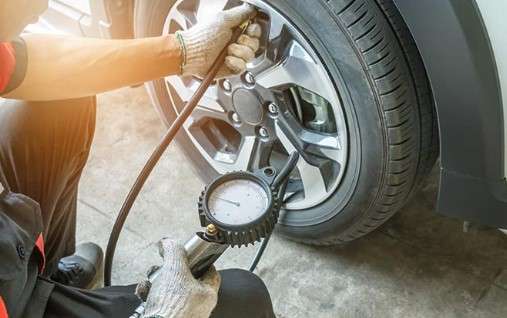
Tires are the unsung heroes of the road, and proper pressure is their secret weapon.
Maintaining the correct tire pressure is not just about avoiding a flat; it’s about ensuring optimal performance, fuel efficiency, and safety. It’s like giving your car a daily dose of vitamins.
Underinflated tires create more friction, leading to increased wear and tear. Conversely, overinflated tires reduce the tire’s contact with the road, impacting traction and handling.
So, keeping that sweet spot of tire pressure is like finding the Goldilocks zone for your vehicle.
Read More: Can Low Tire Pressure Cause Stabilitrak?
Factors Influencing Tire Pressure
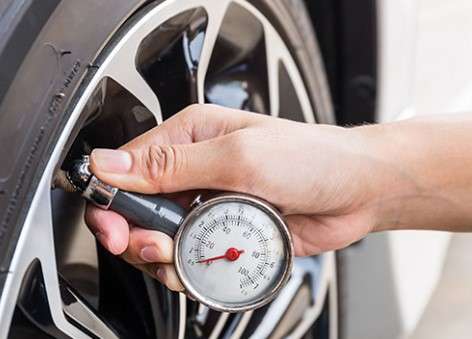
As a tire specialist, I can assure you that several factors play into the delicate balance of tire pressure.
- Ambient Temperature: This one is a game-changer. As the temperature fluctuates, so does your tire pressure. Cold weather causes the air inside the tire to contract, leading to lower pressure, while hot weather does the opposite.
- Tire Type: Different tires have different pressure requirements. Make sure you’re following the manufacturer’s recommendations for your specific set.
- Driving Habits: Aggressive driving generates heat, and heat influences tire pressure. If you have a heavy foot on the gas pedal, monitor those pressure levels closely.
- Altitude: Believe it or not, the air is thinner at higher altitudes, affecting tire pressure. If you’re driving up a mountain, it’s not just your engine working harder.
The Science Behind Tire Pressure and Temperature
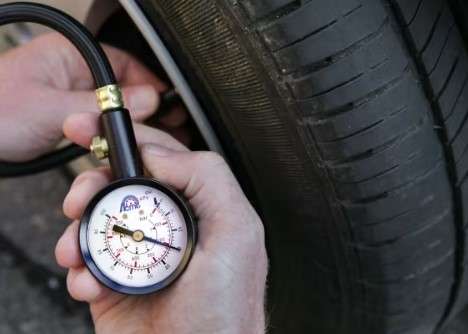
Let’s dive into the nitty-gritty of the tire-temperature relationship. Picture your tire as a living, breathing entity. Okay, maybe not living, but it has a metabolism.
- Expansion and Contraction: As any good science student knows, heat causes things to expand, and cold causes contraction. The same goes for the air inside your tire. When it’s hard, the air molecules huddle together, reducing pressure. In the heat, they party it up, increasing pressure.
- Ideal Temperature Range: Your tire pressure is happiest within a specific temperature range. Stray too far, and you might find your tire whispering warnings through vibrations or handling changes.
- Monitoring Tire Pressure: In the age of technology, we have fancy gadgets to keep tabs on tire pressure. The good old manual pressure gauge works just fine. It’s like giving your tire a health check-up.
Read More: Can Low Tire Tread Cause Vibration?
Can Temperature Affect Tire Pressure?
Absolutely! Temperature is a significant player in the tire pressure game. Let me break it down for you in layman’s terms.
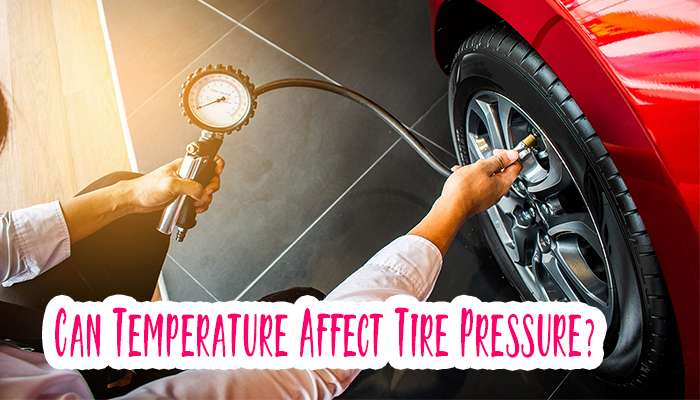
- Cold Weather Woes: In winter, your tire pressure might drop faster than the temperatures. It’s like your tires are feeling the chills, too. So, check those pressure levels more frequently when it’s frosty outside.
- Hot Days, High Pressure: Summer heat can turn your tires into overachievers. The air inside expands, causing pressure to spike. Don’t be surprised if your dashboard light joins the summer party.
Pro Tip: Regularly check your tire pressure, especially during temperature extremes, to keep your ride smooth and safe.
Seasonal Tire Maintenance Tips
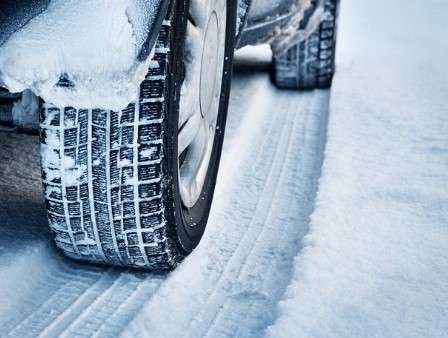
Tires also have seasons and need a little extra TLC during extreme temperatures. Here’s your seasonal tire maintenance cheat sheet:
1. Winter Wonderland:
- Check Pressure More Often: Cold weather is the enemy of tire pressure. Keep that gauge handy and check those levels more frequently.
- Invest in Winter Tires: Consider switching to winter tires if you live in a snowy wonderland. They’re like snow boots for your car.
2. Summer Sizzle:
- Hydrate Your Tires: Okay, not with water, but with proper inflation. Hot roads and high speeds demand well-hydrated tires.
- Inspect Tread Depth: Summer rains can turn streets into slippery slopes. Ensure your tires have ample tread depth for effective water dispersion.
Read More: Are Tire Rotations Necessary?
Conclusion
In the vast realm of tire knowledge, understanding the dance between temperature and pressure is like having the secret code to unlock your tire’s full potential.
So, fellow road warriors, embrace the tired wisdom, share your experiences, and let’s roll towards safer and smoother journeys!
Do you have a unique tire hack or a project involving your trusty wheels? Please share it with the community!
Whether DIY tire maintenance or an epic road trip tale, your experiences can steer others in the right direction.
Glossary
- Traction: The grip between your tires and the road.
- Inflation: Filling your tires with the right amount of air.
- Tread Depth: The thickness of the rubber on your tire affects its ability to grip the road.
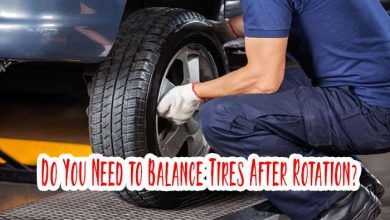
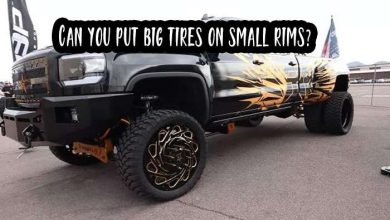
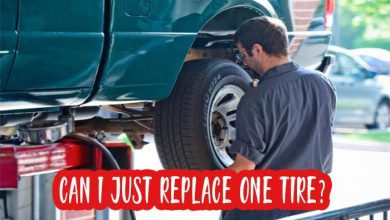
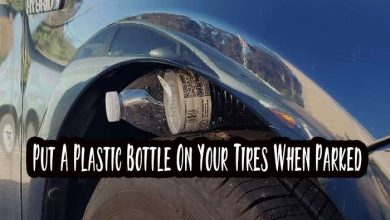
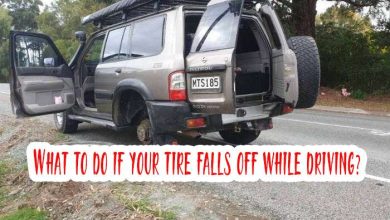
This article does not give how to act on pressure change by temperature-chanche, only mentions to check more often.
The conclusion of this ” pigheaded Dutch selfdeclared tyrepressure specialist” is, check, but mostly dont act.
When cold ambiënt temperature, lower pressure so more deflection, so more heatproduction. But also then cooling down is better, because of more temperature-difference between tire-material and inside tire gascompound, and outside tire air.
When hot outside the other way around.
So within a certain ambiënt temperature range, let the pressure flow with temperature, if cold pressure filled at about 68 degr F.
Would like mailcontact with you about it.
Hello jadatis,
Thank you for taking the time to share your thoughts on the article. I appreciate your perspective on actively responding to temperature-induced tire pressure changes. It’s great to have an engaged audience contributing valuable insights.
I understand your point about adapting tire pressure within a certain ambient temperature range to optimize performance. Your suggestion to let the pressure flow with the temperature, especially in the context of filling cold pressure at around 68 degrees Fahrenheit, adds an interesting dimension to the discussion.
While the article emphasizes the importance of frequent pressure checks, your input highlights a proactive approach to maintaining optimal tire pressure based on temperature variations. Your insights underscore the dynamic relationship between ambient temperature and tire pressure, acknowledging the impact on heat production and cooling efficiency.
It’s valuable for our readers to explore different perspectives on this topic, and your expertise as a self-declared tire pressure specialist adds depth to the conversation. I encourage others to consider your viewpoint when contemplating how best to manage tire pressure in diverse weather conditions.
Thank you once again for sharing your expertise, and I look forward to hearing more from you in the future.